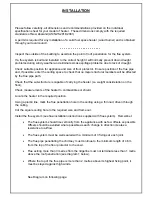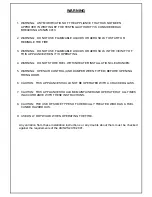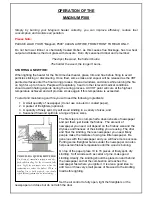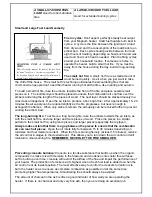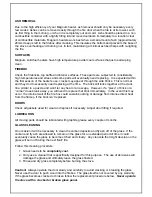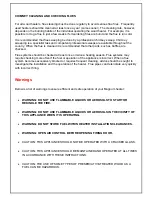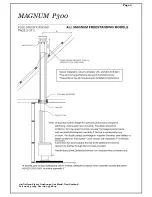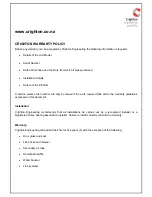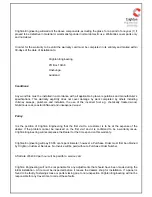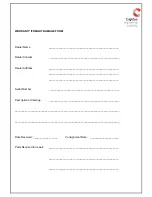
INSTALLATION
Please follow carefully, all dimensions and recommendations provided on the individual
specification sheet for your model of heater. These dimensions comply with the required
standards of New Zealand (AS/NZS 2918:2001)
A permit is required for any installation of a solid fuel space heater (wood burner) and is obtained
through your local council.
* * * * * * * * * * * * * * * * * * * * * *
Inspect the outside of the building to ascertain the point of roof penetration for the flue system.
If a flue system is built and installed to the correct height it will normally prevent down draught
problems during windy weather and eliminate smoke spillage problems due to lack of draught.
Check suitable position for appliance and size of floor protector. Ensure position of the flue pipe
and, if possible, enter the ceiling space to check that no major structural members will be affected
by the flue pipe path.
Check that the sub-structure is capable of carrying the heater (i.e. weight consideration on the
floor).
Check measurements of the heater to combustibles or shield.
Locate the heater in the required position.
Using a plumb line, mark the flue penetration hole in the ceiling using a thin nail, driven through
the ceiling.
Cut the square ceiling hole to the required size and frame out.
Install the flue system (see flue installation instructions supplied with flue system). Remember:
•
The flue system should rise vertically from the appliance with as few offsets as possible.
Offsets should be avoided where possible as each change in direction creates a
resistance to airflow.
•
The flue system must be well sealed with a minimum of 3 fixings at each joint.
•
The flue pipe penetrating the chimney must continue to the minimum length of 4.6m
from the top of the floor protector to the cowl.
•
Flue exiting more than 3 metres from the ridgeline must not terminate less than 1 metre
above the roof penetration (see diagram 1 below).
•
Where the top of the flue pipe is more than 2 metres above its highest fixing point, it
must be stayed against high winds.
See Diagram on following page:



